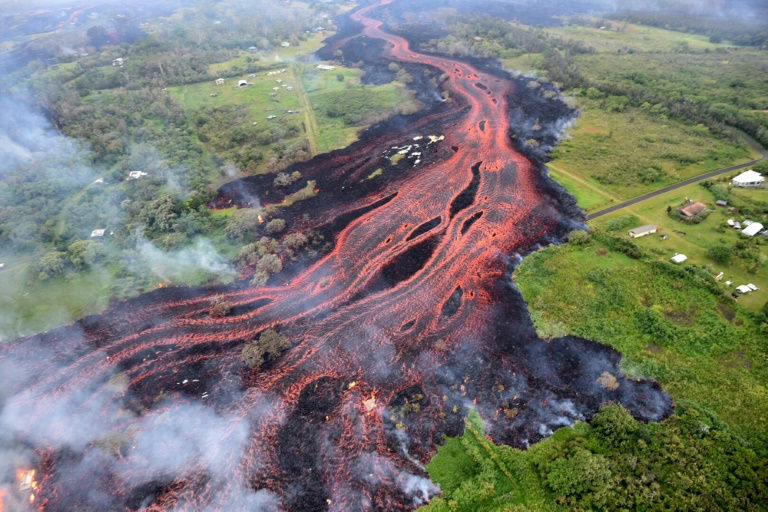
This US Geological Survey (USGS) image obtained on May 20 shows a lava channel emerging on Kilauea Volcano’s lower East Rift Zone. /AFP
Hawaii volcano
Authorities in Hawaii have warned of dangerous “laze” fumes as molten lava from the erupting Kilauea volcano reached the Pacific Ocean.
Two lava flows “reached the ocean along the southeast Puna coast overnight,” on Hawaii’s Big Island, the US Geological Survey, which monitors volcanoes and earthquakes worldwide, said in a statement Sunday.
A crack, however, opened in the ground under one of the lava channels, “diverting the lava… into underground voids,” the statement said.
When the hot lava flow hits the water it produces acid fumes known as “laze” – lava and haze.
“The plume is an irritating mixture of hydrochloric acid gas (HCl), steam, and tiny volcanic glass particles,” the USGS said.
“This hot, corrosive gas mixture caused two deaths immediately adjacent to the coastal entry point in 2000, when seawater washed across recent and active lava flows.”
The USGS also warned that volcanic gas emissions “have tripled as a result of the voluminous eruptions.”
Moderate winds means that areas downwind from the volcano “may experience varying levels of vog,” or volcanic smog, a haze created when emissions react to oxygen, moisture, dust, and sunlight, the USGS said.
One giant lava flow grew to 20 feet (six meters) in height and blocked a portion of Highway 137, seriously impacting area residents, Hawaii News Now reported.